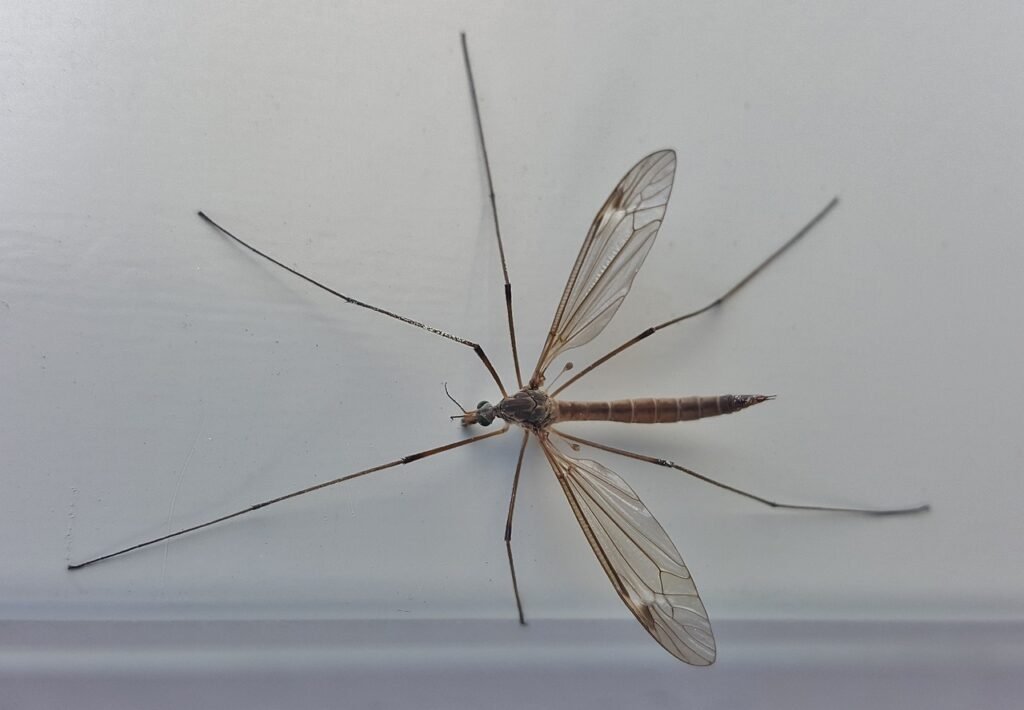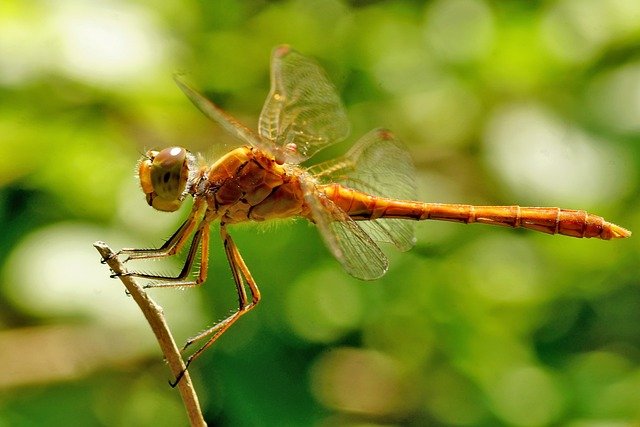
What is a mosquito hawk
Mosquito hawk is commonly used, but it can refer to different creatures depending on the context. Understanding what a mosquito hawk is involves delving into the characteristics and behaviors of two primary insects often called by this name: the crane fly and the dragonfly. Each plays a distinct role in their ecosystems, and their life cycles and habits are crucial to understanding their identities.
The term mosquito hawk can be misleading due to its application to both crane flies and dragonflies. While crane flies do not prey on mosquitoes, their larvae contribute to ecosystem health in other ways. Dragonflies, on the other hand, are direct predators of mosquitoes and are essential in controlling mosquito populations.
Understanding the differences between these two insects highlights the importance of using precise terminology in entomology. Both crane flies and dragonflies play unique and vital roles in their respective environments, contributing to the complex web of ecological interactions. By appreciating these distinctions, we can better appreciate the diversity and functionality of insect life in our world.

Crane Flies – Misunderstood Giants
Crane flies, often mistaken for oversized mosquitoes, are the most frequent bearers of the mosquito hawk nickname. Belonging to the family Tipulidae, these insects are characterized by their long legs, slender bodies, and wingspan that can range from 1 to 3 inches. Despite their appearance, crane flies are harmless to humans. They do not bite or sting, and adult crane flies typically do not feed at all, living only to mate and lay eggs.
Life Cycle and Habits
The dragonflies pass through three stages of incomplete metamorphosis: the egg, tiny, and grownup. Female crane flies lay eggs in moist soil or water. These eggs hatch into larvae, commonly known as leatherjackets, which feed on decaying organic matter and plant roots. The larval stage can last several months, during which time they play a significant role in soil aeration and decomposition. After pupation, adults emerge primarily in late summer to early fall.
Ecological Importance
While crane flies themselves are not predators of mosquitoes, their larvae contribute to soil health and nutrient cycling. This indirect benefit supports the growth of plants and the broader ecosystem.

Dragonflies – The Aerial Predators
Dragonflies, another insect referred to as mosquito hawks, are voracious predators of mosquitoes and other small insects. Belonging to the order Odonata, dragonflies are agile fliers with powerful mandibles used for catching and consuming prey mid-air. With their striking colors and large eyes, dragonflies are both fascinating and beneficial to humans.
Life Cycle and Predatory Behavior
The dragonflies pass through three stages of incomplete metamorphosis: the egg, tiny, and grownup. Females lay eggs in or near water. The nymph stage, which can last several years, is spent entirely in aquatic environments where the nymphs are fierce hunters, preying on aquatic insects, tadpoles, and even small fish. Upon maturation, they emerge as adults to take to the skies.
Adult dragonflies are skilled hunters. With their excellent vision and rapid flight, they can capture and consume a wide variety of flying insects, including mosquitoes. This makes them valuable allies in controlling mosquito populations naturally.
Ecological Role and Benefits
The dragonflies are essential to preserving the equilibrium of insect populations.. By preying on mosquitoes, they help reduce the incidence of mosquito-borne diseases. Additionally, they serve as indicators of healthy aquatic ecosystems, as they require clean water for their nymph stages.
Mosquito hawk bite
When discussing mosquito hawks, one common question that arises is whether these insects can bite humans. The term “mosquito hawk” generally refers to two different insects: the crane fly and the dragonfly. Understanding whether either of these insects bites requires a closer look at their biology, behavior, and feeding habits. This article will explore the myths and facts surrounding mosquito hawk bites.
Crane Flies -The Gentle Giants
Crane flies, often mistaken for large mosquitoes, are sometimes feared for their appearance. Their long legs and mosquito-like bodies can be alarming, but crane flies are harmless to humans.
Biology and Feeding Habits
Crane flies belong to the family Tipulidae and are characterized by their delicate, long legs and slender bodies. Crane flies don’t hurt or bite, in opposition to mosquitoes. In fact, most adult crane flies do not feed at all. When they are adults, reproducing is their main goal. After emerging from the pupal stage, crane flies live for only a short time, focusing on mating and laying eggs.
Myths vs. Reality
The myth that crane flies bite likely stems from their resemblance to mosquitoes. However, crane flies lack the mouthparts necessary for biting or feeding on blood. Their larvae, known as leatherjackets, feed on decomposing plant material and roots, contributing to soil health rather than posing any threat to humans.
Dragonflies The Aerial Predators
Dragonflies, also referred to as mosquito hawks, are another insect often implicated in the myth of biting humans. Known for their impressive hunting skills, dragonflies are actually beneficial predators of mosquitoes.
Biology and Feeding Habits
Dragonflies belong to the order Odonata and are equipped with strong mandibles for catching and consuming prey. They have excellent vision and agile flight, making them formidable hunters of small insects, including mosquitoes. Dragonflies undergo incomplete metamorphosis, with aquatic nymphs that are also predatory.
Can Dragonflies Bite Humans?
While dragonflies have the ability to bite, they rarely do so. Their mandibles are designed for capturing and consuming smaller prey, not for attacking humans. On the rare occasion a dragonfly feels threatened and bites in self-defense, the bite is usually harmless and causes minimal discomfort. Unlike mosquitoes, dragonflies do not feed on blood and have no reason to bite humans.
Myths vs. Reality
The myth of dragonfly bites likely arises from their predatory nature and powerful mandibles. However, dragonflies pose no significant threat to humans and are more focused on hunting insects than interacting with people.
Why the Myths Persist
- Appearance and Misidentification The large size and mosquito-like appearance of crane flies can easily lead to confusion and fear.
- Behavioral Misunderstanding Dragonflies’ aggressive hunting behavior might be misinterpreted as a threat to humans.
- Lack of Knowledge – Many people are unfamiliar with the biology and habits of these insects, leading to misconceptions.
- Mosquito Hawk Bite Identifying Mosquito Hawks and Mosquitoes The term “mosquito hawk” is colloquially used to describe two different insects crane flies and dragonflies. Despite sharing this nickname, they are quite different from each other and from mosquitos.
Mosquitoes belong to the family Culicidae and are infamous for their blood-feeding habits. Female mosquitoes require blood meals to develop their eggs, while male mosquitoes feed primarily on nectar. Mosquitoes are small, with slender bodies and wings covered in tiny scales. Their long, needle-like mouthparts are adapted for piercing skin and sucking blood. - Mosquito Hawk Diet Unveiling the Feeding Habits of Crane Flies and Dragonflies
The term “mosquito hawk” can refer to two different insects: crane flies and dragonflies. Despite the shared nickname, these insects have distinctly different diets and ecological roles. Understanding their feeding habits provides insight into their behaviors, life cycles, and contributions to their ecosystems. This article delves into the diets of crane flies and dragonflies, highlighting the differences and clarifying misconceptions.
Mosquito hawk diet
Crane flies, often mistaken for large mosquitoes, are typically referred to as mosquito hawks in some regions. However, this nickname is misleading as crane flies neither hunt mosquitoes nor have similar feeding habits.
Most adult crane flies do not feed at all. Their primary focus is on reproduction, and their short lifespan as adults (typically a few days to a week) means that feeding is not a significant part of their lifecycle. Those that do feed may consume nectar or other plant fluids, but this is relatively rare.
Crane flies have soft mouthparts that are not adapted for biting or piercing. This means they cannot bite humans or other animals, nor can they feed on solid food.
Dragonflies, often accurately referred to as mosquito hawks, are renowned for their predatory skills. Unlike crane flies, dragonflies have a significant impact on mosquito populations due to their hunting behaviors. Adult dragonflies are carnivorous and primarily feed on other insects. Their diet includes mosquitoes, flies, gnats, bees, and occasionally other small insects. Dragonflies are agile hunters, capable of catching prey mid-flight with their legs, which they use to form a basket-like structure.
Dragonflies have excellent vision, aided by their large, multifaceted eyes, which allows them to spot and track moving prey. They can fly at high speeds and make rapid maneuvers to capture their targets.
Red mosquito hawk
The term mosquito hawk is commonly associated with dragonflies due to their role as predators of mosquitoes. When we add the descriptor “red,” we delve into the fascinating world of red dragonflies. These vibrant insects are not only striking in appearance but also play a crucial role in their ecosystems. This article explores the characteristics, behaviors, and ecological significance of red dragonflies, often referred to as red mosquito hawks.
Red dragonflies are part of the larger dragonfly family, known for their bright coloration and dynamic flight patterns. Several species of dragonflies exhibit red hues, making them stand out in their natural habitats.
Recognizable by the red color and the distinctive dark patches on their wings, resembling saddlebags.
Cardinal Meadowhawk (Sympetrum illotum) Known for their bright red bodies and clear wings, often found near ponds and marshes.
Red-veined Darter (Sympetrum fonscolombii) Distinguished by their red bodies and the red veins in their wings.
The red coloration in dragonflies can serve as a warning to predators or play a role in attracting mates. The intensity of the red color can vary between species and even within individuals of the same species.
Like other dragonflies, red mosquito hawks have elongated bodies, large multifaceted eyes, and two pairs of strong, transparent wings.
Mosquito hawk trap
The term mosquito hawk often refers to dragonflies, which are natural predators of mosquitoes. While dragonflies are beneficial in controlling mosquito populations, the concept of a “mosquito hawk trap” typically refers to methods designed to attract and manage these predators to naturally reduce mosquitoes. This article explores the potential of using traps to attract dragonflies, evaluates the effectiveness of such methods, and considers their environmental impact.
Dragonflies, known as mosquito hawks, play a significant role in controlling mosquito populations. Both dragonfly nymphs and adults are voracious predators.
- Dragonflies lay their eggs in or near water. Clean, still, or slow-moving water bodies are ideal.
- Aquatic plants provide places for dragonfly nymphs to hide and adults to perch.
- Dragonflies are ectothermic and rely on sunlight to regulate their body temperature.
Designing a Mosquito Hawk Trap
Creating an environment that attracts dragonflies involves replicating their natural habitat conditions.
- Installing a pond or water garden can attract dragonflies. Find out that the water is pure and clear of impurities.
- A variety of depths (from shallow to deeper areas) and a moderate size can support different life stages of dragonflies.
Rock and Perch Areas
Rocks and Logs Placing rocks and logs around the water feature gives dragonflies places to perch, bask in the sun, and hunt for prey.
Fish and Birds Limiting fish populations that feed on dragonfly nymphs and ensuring bird feeders are placed away from the water can help protect dragonflies.
Effectiveness of Mosquito Hawk Traps
The quality and suitability of the created habitat are crucial. Clean water, appropriate vegetation, and minimal disturbances enhance success.
Proximity to existing dragonfly populations can increase the likelihood of attracting these insects.
Regular maintenance to keep the water clean and vegetation healthy is necessary for sustaining dragonfly populations. Thanks
